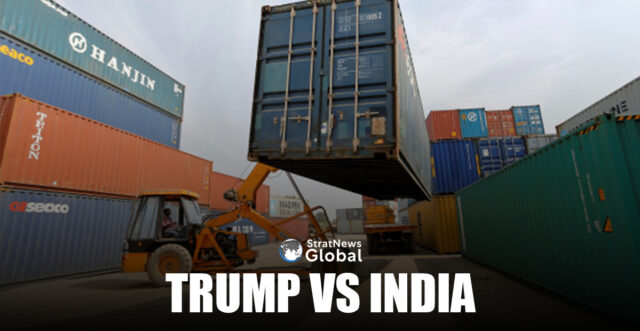When Donald Trump takes over as president in January 2025, he has announced plans to impose 25% tariff on goods coming from Mexico and Canada, and an additional 10% tariff on imports from China until it curbs the smuggling of the opioid fentanyl.
India does not figure in what seems to be this initial hit list although Trump called India “a very big (trade) abuser” during his election campaign. That does suggest he could renew the trade tensions from his first term, this time targeting the $75 billion of India’s exports to the US.
According to Bernstein Research, which focuses on equity research and trading, India would have only “limited” benefits from a Trump presidency. While tariff pressures will be there, and the China-plus one strategy will gain momentum (which could help India), inflation caused by trade barriers might disrupt anticipated interest rates cuts, affecting middle class consumption.
Readers will recall Trump’s abrogation of GSP (Generalised System of Preferences) for India, which cost this country $5.7 billion of tariff-free exports to the US. The significance of GSP was that it did not require India to open its markets to the US or offer similar or same tariff concessions.Since then, successive efforts to have GSP restored have not been successful.
But a study by the Observer Research Foundation dated August 2020 (https://www.orfonline.org/research/understanding-the-impact-of-gsp-withdrawal-on-indias-top-exports-to-the-us), found that of India’s top nine exports under GSP to the US, six were unaffected by the withdrawal.
The study notes that exports of electrical machinery to the US every grew along with other products and suggested that instead of putting retaliatory tariffs on US goods, India needs to find ways to ensure exports continue without the support of such programmes.
A Business Today report quoting the Global Trade Research Initiative think tank, warned of tougher policies on H-1B visas.
“Stricter policies on outsourcing and possible restrictions on H-1B visas, could disrupt India’s IT sector, which relies heavily on the US market. Reduced outsourcing may affect earnings for Indian firms and complicate hiring skilled talent.”
Analysts also expected the rupee to weaken as the dollar becomes stronger. The rupee could breach the 85 level over the next to eight to 12 months.
Thirty eight years in journalism, widely travelled, history buff with a preference for Old Monk Rum. Current interest/focus spans China, Technology and Trade. Recent reads: Steven Colls Directorate S and Alexander Frater's Chasing the Monsoon. Netflix/Prime video junkie. Loves animal videos on Facebook. Reluctant tweeter.





